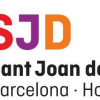
What is Proteus syndrome? Symptomatology and genetic origin

Description of the natural history of vasculopathies
As we mentioned in a previous article, PI3K related overgrowth syndromes, which include Proteus syndrome, have been linked to a mutation in AKT, (in this case the isoform AKT I) and has a prevalence of 1/1,000,000 in children and adults. In this case the mutation is sporadic in some cells and is not inherited. This is what we call mosaic activating pattern, which can occur in many genetic diseases. Cells with the mutation will start to proliferate and accumulate cells of the same type leading to several disorders characteristic of this syndrome.
Proteus syndrome is generally described as a rare overgrowth disorder that mostly affects the skin. The overgrowth of the skin, bones and other tissues such as the endothelium is usually asymmetric. Overgrowth gets more severe as the patient gets older, and it is not visible in newborns. It can be noticeable after 6-18 months of age.
Main affectations in Proteus syndrome
- Bones are the most apparent affectations because of their abnormal overgrowth. Limbs, skull and spine are the ones mostly affected.
- Skin can show a variety of overgrowths. The most prevalent is CCTN (Cerebriform connective tissue nevus), which is a thick, raised and deeply grooved lesion that usually occurs on the soles of the feet. Evaluation of the progression of skin lesions in these patients is done by CCTN score and growth rate.
- Blood vessels can also be affected by overgrowth. Affectation of the blood vessels is the origin of vascular tumors in Proteus syndrome.
- Fat overgrowth.
Potential complications in Proteus syndrome are the development of benign tumors (in any tissue) and deep venous thrombosis (DVT). DVT are blood clots that are formed because of a slow blood flow into the deep veins of the legs and arms. Pieces of these blood clots can travel through the bloodstream directly into the heart and to the lungs, where they can get stuck and cause a pulmonary embolism, which is a life-threatening condition. In fact, it is a common cause of death within people with Proteus syndrome.
It is especially important to apply a differential diagnosis with other diseases that can be confused with overgrowth symptoms, because clinically they are very difficult to distinguish. Proteus syndrome tends to be over-diagnosed.
Associated genetic defects in Proteus syndrome
As mentioned above, Proteus syndrome is the result of a mutation in the AKT1 gene. It is not inherited and arises randomly (de novo) in one cell during the early stages of development before birth. AKT1 regulates cell growth, cell division and cell death. Mutations make the cell grow and divide abnormally. These mutations are more common in cell groups that have a high rate of proliferation (such as skin or blood cells), rather than tissues that have a normal rate of growth or that do not proliferate at all, like neurons or cardiomyocytes.
Mutations in another gene named PTEN, which is responsible for the synthesis of the PTEN protein, has also been associated to Proteus syndrome. However, these patients do not meet the strict guidelines for the diagnosis of this syndrome.
These genetic disorders are not inherited so they do not run in the family’s genes. Treatment Proteus consists in blocking the PI3K/AKT pathway using PI3K inhibitors to stop the pathway at the very top. Inhibitors bind to the PI3K protein and do not allow its phosphorylation, so the protein does not adopt an active form.
New treatments (antibodies) are now targeting AKT: Miransertib (ARQ 092), which suppresses AKT by inhibiting the active and inactive form of AKT, is very useful for patients with overgrowth and/or vascular anomalies with genetic alterations in AKT. Proteus syndrome is one of the diseases that arise from mutations in AKT so this new therapy would be more specific and effective than classic PI3K inhibitors. Studies show that Miransertib achieves a 50% decrease in phosphorylated AKT and non- phosphorylated AKT.
Closing thoughts
Proteus syndrome (PS) can be a challenging and severe rare disorder. Diagnosis is difficult and controversial and it can lead to acute disabilities. Boosting research in this overgrowth syndrome will ultimately improve the lives of the people and families affected. Share4Rare would like to connect patients with Proteus syndrome in order to enhance new research projects. Are you affected by PS? Do you know somebody who is? Join the world’s biggest community of rare disease patients and connect with people like you. We need you to move forward!
